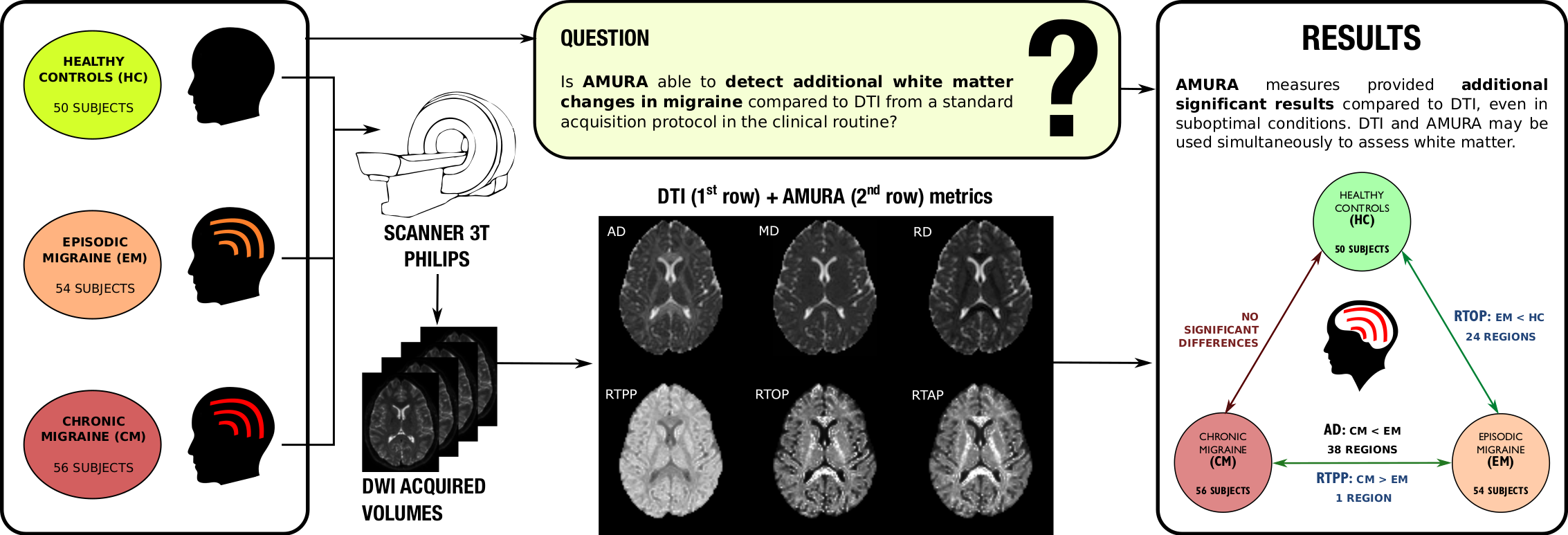New dMRI methodology uncovers additional alterations in migraine

AMURA (https://www.lpi.tel.uva.es/AMURA), the new tool developed by LPI members, has been used to compare diffusion measures in patients with episodic and chronic migraine and healthy controls using clinical routine diffusion MRI acquisition parameters. Additional statistically significant differences with respect to the diffusion tensor imaging (DTI) descriptors (previous DTI article: https://doi.org/10.1186/s10194-019-1071-3), finding lower RTPP values in patients with episodic migraine compared to controls in 24 white matter regions, where no DTI differences were identified. This article demonstrates that AMURA can provide additional results with respect to DTI to uncover white matter alterations in migraine, even in suboptimal conditions for the tool with a single low b-value.
The new paper, entitled "Alternative Microstructural Measures to Complement Diffusion Tensor Imaging in Migraine Studies with Standard MRI Acquisition", has been published in Brain Sciences as part of the Special Issue "Migraine as a Dynamic Disorder: News about Mathematical Models and Connectivity Analysis". This article has been written by Álvaro Planchuelo-Gómez, Santiago Aja-Fernández and Rodrigo de Luis-García, in collaboration with the Headache Unit and the Department of Radiology of the Clinical Hospital of Valladolid.
The article is available here (Open Access): https://doi.org/10.3390/brainsci10100711
